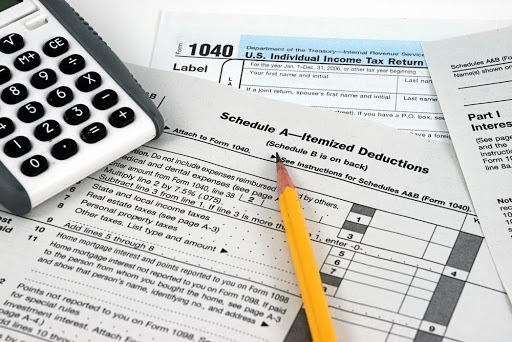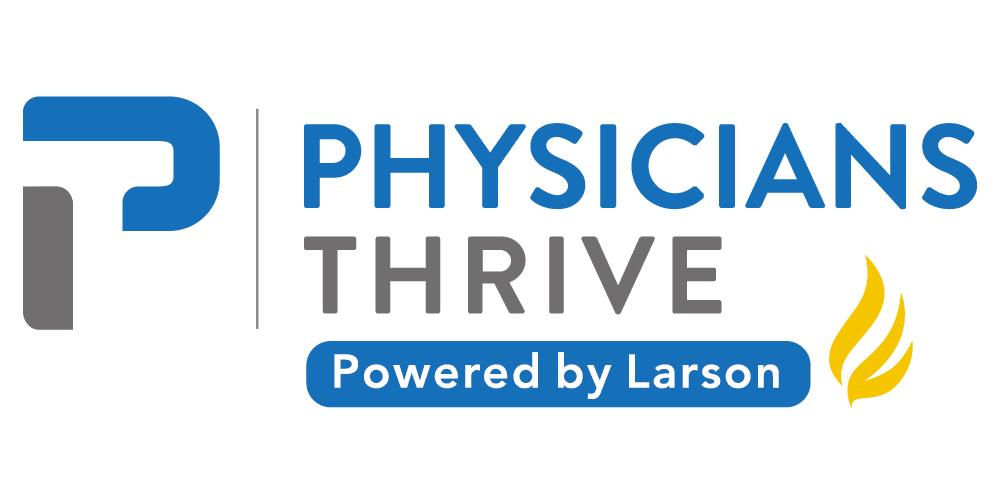Turnaround Time: Peak Season – 2 Weeks / Off-season – 1 Week
Tax Planning & Strategy For Physicians
Physicians Thrive advisors will define any potential errors in your return, identify places where you may be paying tax incorrectly, and determine if you are exposed to a higher IRS audit risk.


7,000+ satisfied physicians
Why Choose A Tax Efficient Plan?
The primary disadvantage of being highly compensated is the extra income tax burden. Along with this comes the pressure of finding the right tax professional. Strong financial plans should include strategies designed to minimize your tax liability and make sure you are not making any mistakes with your tax returns.
Personalized
Your advisor won’t make blanket recommendations based solely on your status as a physician. Get a plan that is personalized to each client’s unique financial situation, goals, and level of risk tolerance.
Straightforward
With all the options out there, our approach makes what seems complex simple. You define your goals and we help you reach them.
Opportunity
Our advisors find the best opportunities and options for you to have the highest probability of reaching your goals while requiring the lowest amount of funding.
Tax Conscious Investing
While they do exist, it is rare to find physicians who are also tax professionals. The nature of the progressive income tax system requires physicians to be extra careful on how they save and file their tax returns. Mistakes can be subject to a 50% penalty for up to three years where income is not reported correctly.
Take a look at the list below and see if any of them would be applicable to you. They may signal the need for an income tax assessment to address your tax burden and verify you are not overly exposed to an income tax audit.
- You have excess cash flow that could be sheltered from additional taxation
- Your employer-sponsored retirement plans are limiting how much you can save each year
- Your retirement plan is primarily comprised of contributing toward the employer-sponsored program and you may not have much additional funding available to save for retirement.
- You have a significant amount already accumulated within a pre-tax retirement plan or down the road you will. Therefore, you’ll need to minimize the impact of 100% of your distributions being subject to the ordinary income tax which is the highest rate.
Tax-deductible contributions
Tax-deferred earnings
Tax-advantage withdrawals and/or income
No required withdrawals
No IRS penalties for early withdrawals
No contribution limits
No administrative fees
Potential competitive rate of return
Ideal Investment
Non Existent
Taxable
Brokerage Account
Pre Tax
401(k), 403(b),
457(b), Traditional IRAs
Post Tax
Roth 401(k), Roth 403(b),
Roth 457(b), Roth IRA
Tax Efficient
Private Pension
Which plan is right for you?
Every investor’s situation is different. Oftentimes it makes sense to use a combination of these options when it comes to retirement planning.
Tax Planning Explained
No one anywhere, in any profession, enjoys paying taxes. Yet we all have to do it. It may be the one thing that every American has in common. And for physicians who earn high incomes, it’s not uncommon to have to pay tens of thousands of dollars in taxes every year.
As the old saying goes, “the more you make, the more they take.” This is true. However, there are many ways to reduce your tax bill and keep more money in your pocket.
It starts with tax planning.
Today we’re going into some strategies you can employ to reduce your tax burden and keep more money in your pocket.
Table of Contents
Why Is Tax Planning Important?
There’s a lot more to tax planning than keeping receipts and making a couple of last-minute charitable contributions at the end of the year.
Those are minor components of an overall solid strategy, but effective tax planning goes well beyond that.
With proper tax planning, you can reduce your tax liability. You can keep more money in your pocket. You can build a more robust retirement plan.
Tax planning requires that you think about what you want your financial future to look like. It’s not just about doing what you can do before you file your next tax return to pay less in taxes.
Efficient and effective tax planning is a long game, not a short one. The taxes you pay in your 30’s, 40’s, and 50’s will affect you in retirement.
Regardless of your age, it’s time to start thinking about the bigger picture. It’s time to start thinking about taxes as one component of your overall retirement plan.
What Does Tax Planning Involve?

Tax planning involves a series of moving parts. Tax plans are not set in stone. They can evolve and change over time, depending on your taxable income and employment circumstances.
In addition, tax laws change from year to year, so what might be a part of your plan one year may not be applicable the next year.
To stay abreast of the laws, including the tax credits, deductions, and exemptions you are eligible for, hire an expert.
As a physician working long hours, it’s almost impossible to know every in and out of the tax code, how it works, and how it can hurt or benefit you. The best thing you can do is work with a financial advisor, CPA, or tax professional who is always on top of the current laws.
A trusted financial advisor will be able to guide you through all of these details.
If you haven’t already done so, hire an expert to help you put a plan in place immediately. It’s never too early or late in the year to start tax planning.
A financial advisor will let you know what steps to take throughout the year in order to maximize deductions. They can also help you make mid-year tax changes, which can make a huge difference in your short-term tax liability and your long-term financial goals.
A professional will also tell you exactly how much you can contribute to IRAs and other retirement funds. In addition, they will guide you on how to plan for and make those payments throughout the year.
Retirement planning is at the core of any solid tax strategy. With retirement goals in place, you can start to build a solid foundation for a robust, thorough plan.
Related: 5 Ways for Doctors to Save on Taxes
Contributions to Retirement Accounts
Regardless of what type of tax plan you put in place, the end game is always the same:
To reduce your tax liability and keep as much money as possible in your pocket.
And one of the best ways to reduce your tax liability is to maximize your deductions.
Here are several ways to maximize deductions and save on taxes so you can reach that bigger picture goal.
Investing in a 401k
For 2020, the IRS has set a maximum contribution of $19,500 for 401k, 403b, and other similar retirement plans. And while $19,500 may be more than many people in many professions can afford to save, it’s a rather small percentage of the average physician’s salary.
If you have an employer retirement account, you’ll want to look for other ways to build your retirement savings and reduce your tax liability.
You do not pay taxes on the money you invest in traditional retirement accounts — you pay the taxes when you make withdrawals. Plans that work this way are sometimes referred to as qualified plans.
Technically, a qualified plan is defined as an employer-sponsored retirement plan. Qualified plans must meet the ERISA guidelines as set forth by the U.S. Department of Labor.
There are non-qualified plans as well.
So what’s the difference between qualified and non-qualified retirement plans?
Non-qualified plans don’t have contribution limits, but some require that you pay taxes on the money that you deposit into the account. You may not have to pay taxes when you make withdrawals.
457bs, executive bonus plans, and IRAs are examples of non-qualified plans. Roth IRAs and back door IRAs are also non-qualified.
These can be attractive investment options, especially for physicians and other high-income earners. Talk to your financial advisor about a long-term strategy. In many cases, a combination of plans is the best option.
To sum it up, qualified plans will help you reduce your tax liability now. Non-qualified plans can help you reduce your tax liability later.
SEP IRA
The Simplified Employee Pension, or SEP-IRA, is a great investment vehicle for self-employed physicians. Unlike Roth IRAs and 401ks, the contribution limits for SEPs are considerably higher.
As of 2024, physicians can contribute up to 25% of their salary to an SEP-IRA, with a maximum contribution of $66,00. This is one of the best ways for physicians to save money for retirement and reduce their taxable income. But it’s only beneficial if they don’t have any employees.
If you have employees, you will need to contribute the same percentage to your employees’ plans, which can be costly. For physicians with employees, a 401k is often a better strategy in terms of long-term planning.
Contributing to an SEP-IRA plan can also reduce your taxable income or AGI. Depending on how much you earn, it may reduce your income to a level that also qualifies you to make contributions to a Roth IRA.
Roth IRA
As a non-qualified plan, the Roth IRA allows you to pay taxes on contributions rather than on growth and withdrawals. This is a great investment option for physicians who expect to pay significant taxes in retirement.
Like 401k plans, Roth IRAs also have contribution limits. For 20204, the maximum contribution is just $6,500. Though the maximum contributions are low, a Roth IRA can be beneficial if you use it as one of several investment vehicles.
Converting a 401k into a Roth IRA
In some cases, it may be beneficial to convert your 401k into a Roth IRA. There are a variety of benefits to Roth IRAs, the main one being that you won’t have to pay taxes on the money you withdraw, ever. No matter how high the tax rate climbs in your retirement, you won’t pay taxes on Roth IRA withdrawals.
By converting a 401k to a Roth IRA, you will have to pay conversion fees (and taxes) on it now. But you won’t have to pay taxes on it later.
Keep in mind, if you exceed the income limits for Roth IRAs (as most physicians do), you’ll need to use the backdoor Roth IRA method as a workaround.
This method will not save you on taxes now, but it will save you from having to pay taxes later.
Tip: Cash balance plans can also help oyu lower your tax burden. Learn more here: What Physicians Need to Know About Cash Balance Plans
Creating Passive Income Through Alternative Investments
It is commonplace for physicians to want to make the maximum contributions they can to their retirement accounts. Yet there may be circumstances where it may be better to put money into other investments, such as buying real estate or purchasing stock.
If you want the strongest tax planning strategy, you’ll need to be aware of the tax benefits that can come from various investment vehicles.
It is true that many retirement plans allow you to enjoy tax-deferred growth that can be beneficial in retirement. But there may be circumstances that can net you even more in the long run.
There are a variety of ways you can create passive income by making certain investments.
For example, you might want to buy stock in a corporation that can provide long-term value rather than immediate tax deductions. You may find a real estate investment that can provide passive rental income for years to come.
Depending on the circumstances, there may be moments when contributing to a retirement plan isn’t the best use of your money.
It all comes down to opportunity cost.
Ask yourself this question:
Are there opportunities that provide more value than the tax savings you’ll get from contributing to retirement accounts?
This is just one reason why it is so crucial to have a comprehensive financial advisor on your side. They will be able to guide you through these opportunities and help you to decide where you can put your money to make it work best for you in the long run.
Qualified Leverage Strategy
If the assets in your retirement accounts exceed $500,000, you may be eligible to access the Qualified Leverage Strategy. This allows you to move funds from qualified plans into Roth IRAs and life insurance policies.
This offers the opportunity to reduce your taxes in the short term and enjoy more tax-free income in retirement.
Health Savings Accounts
Your financial advisor may also suggest that you put some money into a health savings account.
The HSA is designed to provide people with a way to make tax-deductible deposits that will grow tax-free. Should you need to withdraw the money to pay for medical expenses later in life, you won’t be taxed on it then, either.
But what if you never need it to pay for medical expenses?
Once you hit the age of 65, it no longer matters. At 65 years old, you can start making cash withdrawals from your HSA and pay income taxes on that amount. For people over the age of 65, a health savings account works just like a traditional IRA.
Related: Disability Insurance for Physicians
Business Deductions

If you have your own medical practice or work locum tenens, you can take a variety of business deductions to lower your AGI (adjusted gross income).
Before you even consider taking a standard deduction, talk to a qualified financial advisor. They may have strategies to help you increase your state or federal tax deductions.
If you are a physician in private practice, your business deductions can add up quickly. These include everything from the overhead on your office to medical supplies to insurance premiums.
Locum tenens physicians, as independent contractors, are also able to deduct a variety of expenses. These include travel, food, and lodging expenses while on temporary assignments.
Paying what seems like more in Social Security and Medicare taxes is frustrating. Making the most of your itemized deductions to get tax savings can soften the blow, and, in some cases, reduce your effective income tax rate by a full 10%.
Locums physicians can also deduct insurance premiums and the mileage incurred on their vehicles while driving to and from temporary places of employment. Locum tenens physicians can deduct almost any expense that occurs while on the job.
Let your financial advisor know the type of work you do and who you do it for. Just remember, you’ll need to keep receipts and be able to provide proof of every business deduction you take.
Work Opportunity Credit
Do you employ workers from high-unemployment demographics? If so, you may be able to take advantage of the Work Opportunity Credit. The WOC allows business owners to claim a dollar-for-dollar credit against their taxes just for hiring workers from cities with low employment rates.
You can also reduce your tax liability by hiring contractors or leasing employees. By doing so, you won’t be obligated to make payments related to FICA (the Federal Insurance Contributions Act) or FUTA (the Federal Unemployment Tax Act).
Earning Tax Credits with a Workplace Retirement Plan
Under the SECURE Act (Setting Up Every Community for Retirement Enhancement), you may be able to enjoy tax credits simply for setting up an employer-based retirement plan for your employees. If you establish a workplace retirement plan for the employees in your practice, you may be eligible for a tax credit of up to $5,000.
If you only have two or three employees, you can still reap this benefit by opening a Multiple Employer Plan. An MEP allows you to work collectively with other small businesses to offer retirement plans to larger groups.
Learn more about the SECURE ACT and what it means for physicians.
Research and Development Credits
Have you performed work-related studies or projects that didn’t result in any taxable profit?
You may be able to retrieve up to $250,000 against your payroll taxes. Under the PATH Act of 2015, physicians may qualify for these deductions from previous years, even if those deductions no longer exist in the tax code.
The Augusta Rule
Also referred to as the “14-day rental rule,” The Augusta Rule allows physicians to rent their home to their business tax-free for 14 days. Locum tenens physicians and those who work in private practice should consult with their financial advisor to see if this rule applies.
You may qualify just by hosting events or meetings at your home or providing lodging to attendees and guests.
If it does apply, you won’t have to pay taxes on any rental income you earn in that 14 day period.
S-Corporations
If you work as an independent contractor or own your own practice, physicians can save on taxes by setting up their business as an S-corp. S-corps can save 0.09% on Medicare tax on income above $200,000.
Charitable Donations
For decades, physicians have been making charitable donations as a way to reduce their tax burden.
But there is a way to make those contributions and reduce your tax liability even more:
By donating securities.
Planning to sell some of your stocks or securities so you can make a charitable contribution?
Consider donating those stocks instead.
Anytime you sell or cash out stocks, you have to pay taxes on those earnings. It’s almost pointless to sell stock only to make charitable contributions.
Instead, donate the stock itself. That way, you’ll reap the benefit of the charitable donation and won’t have to pay taxes on the cash withdrawal.
Less Tax Liability Means More Money in Your Pocket
Remember, the less you have to pay in taxes, the more money you’ll be able to keep in your pocket to spend or save the way you wish to.
And the more cash you have on hand, the more money you’ll have to put into retirement plans and investment opportunities.
Is your long-term goal to retire with as much cash as you can? Or have as much money as possible to leave to your family or your heirs?
A multifaceted tax planning strategy will help you get there.
Are you interested in tax advice regarding real estate associated with your medical practice, operating as an S Corp, or being self-employed?
Read more about these and other advanced strategies in 5 Tax Planning Strategies for Physicians.
Tax Planning Can Help You Avoid Common Tax Errors

The only thing worse than having to pay taxes is to pay them then realize you missed out on deductions and opportunities to reduce your tax bill.
There are a variety of common tax errors that physicians make, and they are all avoidable.
When it comes to taxes and planning for retirement, it’s important to know the common errors and mistakes to look out for. Be aware of these and make sure you do what it takes to avoid them.
Read How to Avoid Common Physician Tax Errors to learn more.
Mistake #1: Not Maximizing State Deductions
Are you contributing to a 529 college savings account for your children? Depending on the state you live in, you might be eligible to take state income tax deductions for the contributions made to your 529 plan.
Keep in mind, the 529 plan isn’t just for college. You can also make tax-free withdrawals up to $10,000 per year to pay for elementary or secondary private school education.
If you’re putting money into a traditional savings account specifically for your child’s education, it’s time to rethink your strategy. A 529 plan offers additional tax benefits and reserves the funds for education alone.
The 529 plan, however, is just one way to save money for education. Many self-employed physicians save college funds in a Roth IRA instead.
With a Roth IRA, you pay taxes on the money you contribute to the fund. Those contributions will grow tax-free. In addition, you won’t have to pay taxes on withdrawals if the funds are used to pay for qualified college expenses.
This makes the Roth IRA an attractive alternative to the 529 plan, as it’s a much more flexible option overall.
However, many high-income earners make too much to qualify to contribute to a Roth IRA. If your adjusted gross income is too high — $161,000 as a single tax filer or $240,000 as a joint tax filer — you will not be able to contribute to a Roth IRA in the traditional sense.
You can, however, invest in a SEP IRA as a way to reduce your taxable income. If your SEP IRA contributions lower your AGI to less than $161,000, you can then make Roth IRA contributions. If not, you may want to consider opening a backdoor Roth IRA instead.
Mistake #2: Failing to Keep Records
Charitable donations can help you reduce your tax burden and make you feel like you’re doing something good for humanity. But not all charitable organizations are created equal.
Maximize deductions by donating to an approved non-profit group with 501(c)(3) status. You won’t be able to claim your contribution if you give it to an individual or a non-qualified organization.
Ensure you reap the benefits of your donations. Keep records of when, where, and how you made your contributions.
Mistake #3: Not Making Tax-Free Investments
Tax rates and tax brackets fluctuate, so you can’t expect the tax rate you pay on income now to be the same rate in twenty or thirty or even ten years.
Putting money into tax-deductible plans will reduce your taxes today, but you’ll have to pay taxes on it in retirement when you make withdrawals. Putting your money into accounts where you can make withdrawals tax-free will cost you now, but not later.
To create a sound retirement plan, talk to your financial advisor. In many cases, you can benefit from having a combination of investment accounts. You can also benefit from having some accounts that will cost you in taxes now and some accounts that will cost you in taxes later.
Read How to Avoid Common Physician Tax Errors to learn more.
Tax planning is a long game — it’s not a way to save you money this April.
Effective tax planning is just one important component of your overall retirement plan.
There’s no one cookie-cutter solution. Tax planning for physicians can be complex, confusing, and comprised of many individual parts.
Ready to create a plan that’s right for you and your family? At Physician’s Thrive, we can help you find a personal advisor that knows what tax planning is all about.
Protect yourself today, next year, and in retirement by developing a solid, strategic, tax plan now.
Contact Physicians Thrive today and learn how proper tax planning can lead to better financial health now and at retirement.
Subscribe to our email newsletter for expert tips about finances, insurance, employment contracts, and more!








































